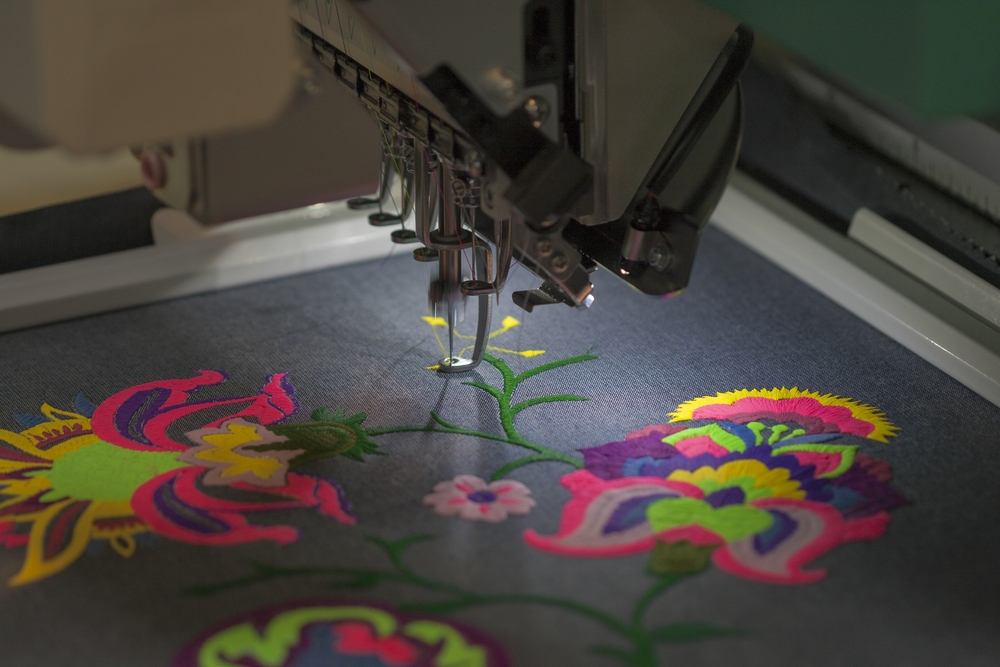Understanding the Embroidery Digitizing Process: Your Ultimate Overview
Embroidery digitizing is a meticulous craft that needs precision and knowledge to equate complex styles right into electronic layouts for device needlework. As artisans start this journey to master the embroidery digitizing procedure, a thorough understanding of the essentials sets the foundation for excellence. Past the basic understanding lies a realm of innovative software application, specialized devices, and nuanced strategies waiting to be discovered. By delving into the subtleties of digitizing, one can unlock a world of imaginative possibilities and elevate their needlework tasks to brand-new heights.

Recognizing Embroidery Digitizing Fundamentals
Embroidery digitizing fundamentals create the foundation upon which complex designs are translated right into machine-readable layouts for accurate sewing. This initial action in the needlework digitizing process is essential for ensuring that the final stitched item is a faithful representation of the initial design. Recognizing embroidery digitizing basics entails grasping key concepts such as stitch kinds, sew direction, density, rug, and draw compensation.
Sew types play a vital duty in figuring out the aesthetic and textural result of the stitched design. By selecting the appropriate stitch type, whether it be satin, fill, or running stitch, digitizers can attain the preferred impact and enhance the overall high quality of the embroidery. Furthermore, stitch direction influences the flow and measurement of the design, while thickness figures out the spacing and coverage of the stitches.
Moreover, rug stitching supplies stability to the design by protecting the textile and avoiding distortion throughout the embroidery procedure. Draw payment is one more important factor to consider to combat the all-natural propensity of textile to agreement when stitched. Mastering these needlework digitizing basics is essential for creating professional-quality embroidered items.
Choosing the Right Digitizing Software Program
Selecting the ideal digitizing software application is a critical decision that significantly influences the efficiency and top quality of the embroidery digitizing process. Digitizing for Embroidery. When picking the ideal digitizing software, it is vital to think about factors such as the intricacy of layouts you intend to develop, the user-friendliness of the software, the degree of client assistance offered, and the compatibility with your needlework equipment
There are different digitizing software program alternatives offered out there, ranging from basic programs for beginners to sophisticated software program for specialist digitizers. Some preferred options consist of Wilcom EmbroideryStudio, Hatch Needlework Software, and PulseID. These software supply a vast array of devices and functions to help you produce complex styles with ease.
Before choosing, it is a good idea to explore the various software application options with totally free tests or demonstrations to identify which one finest matches your demands. Furthermore, checking out evaluations and seeking referrals from knowledgeable digitizers can provide valuable insights into the toughness and weak points of each software bundle (Digitizing for Embroidery). By meticulously evaluating your requirements and comparing the features of various digitizing software program, you can make Go Here an informed choice that boosts your embroidery digitizing operations
Digitizing Tools and Techniques

Optimizing Layout Settings for Embroidery
Understanding the intricacies of style setups is basic in accomplishing optimal outcomes in the embroidery digitizing procedure, building upon the structure laid by understanding digitizing devices and methods. When maximizing style setups for needlework, it is necessary to take into consideration aspects such as stitch type, thickness, padding, pull settlement, and registration. Sew kind selection impacts the total feel and look of the design, with alternatives like satin, fill, and running stitches using different textures and impacts. Thickness describes the spacing and thickness of stitches, affecting the layout's insurance coverage and sturdiness. Correct rug stitching provides security and avoids material distortion, specifically for complicated styles or on stretchy products. Draw payment adjusts for textile stretch throughout stitching, guaranteeing exact design duplication. Registration setups line up different elements of the design accurately, keeping general design stability. By fine-tuning these style setups, embroiderers can improve the quality and accuracy of their stitched developments.

Troubleshooting Common Digitizing Issues
When encountering usual digitizing issues throughout the needlework process, it a knockout post is necessary to comprehend the source and apply efficient options quickly. One common issue is stitch density concerns, where stitches may be also thick, creating the fabric to tighten, or too sparse, leading to voids in the layout. Adjusting the stitch thickness settings in the digitizing software program can assist settle this issue.
One more regular challenge is thread breaks during the embroidery procedure. This can take place due to numerous factors such as inaccurate stress settings, plain needles, or using low-quality thread. Making certain proper maintenance of the needlework machine, consisting of normal needle changes and tension modifications, can minimize the occurrence of thread breaks.
In addition, design registration mistakes can cause misaligned aspects within the embroidery layout. Examining the style placement in the digitizing software program and making required modifications prior to stitching can help in preventing this concern. By dealing with these common digitizing concerns without delay and efficiently, you can make sure a smoother needlework procedure and premium completed products.
Verdict
In final thought, mastering the needlework digitizing procedure calls for a strong understanding of the fundamentals, the best choice of hop over to here software program, and understanding of tools and techniques. Optimizing layout settings and fixing common digitizing concerns are essential steps in making certain high-grade embroidery results. By following these actions diligently, one can attain accuracy and effectiveness in the digitizing process.